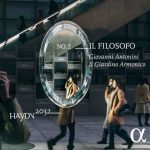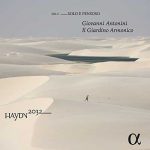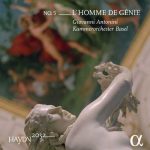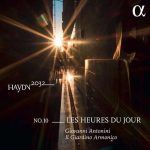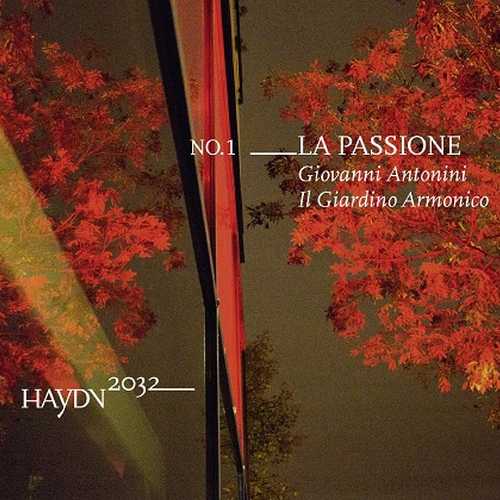
Orchestra: Il Giardino Armonico
Conductor: Giovanni Antonini
Format: FLAC (tracks)
Label: Alpha
Release: 2014
Size: 1.26 GB
Recovery: +3%
Scan: yes
Franz Joseph Haydn:
Symphony No. 39 in G Minor, Hob. I:39 “Tempesta di mare”
01. I. Allegro assai
02. II. Andante
03. III. Menuet – Trio
04. IV. Finale (Allegro di molto)
Christoph Willibald Gluck:
Don Juan ou Le festin de pierre, Wq. 52
Ballet Pantomime (1761). Original version
05. Sinfonia (Allegro)
06. 1. Andante grazioso
07. 2. Andante
08. 3. Allegro forte risoluto
09. 4. Allegro gustoso
10. 5. Moderato
11. 6. Grazioso
12. 7. Allegro
13. 8. Moderato – Presto
14. 9. Risoluto e moderato
15. 10. Allegro – 11. Allegro – 12. Allegro
16. 13. Andante staccato
17. 14. Larghetto
18. 15. Allegro non troppo
Franz Joseph Haydn:
Symphony No. 49 in F Minor, Hob. I:49 “La Passione”
19. I. Adagio
20. II. Allegro di molto
21. III. Menuet – Trio
22. IV. Finale (Presto)
Symphony No. 1 in D Major, Hob. I:1
23. I. Presto
24. II. Andante)
25. III. Finale (Presto)
Recorded: Teldex Studio Berlin, 20–24 October 2013
Since the 2015-2016 season, Giovanni Antonini has been the “principal guest conductor” of the Basel Chamber Orchestra (Kammerorchester Basel, recreated in 1984 in the spirit of the first Basler Kammerorchester which was founded by the patron and Swiss conductor Paul Sacher). He is working with them on important discographic projects, such as the complete Beethoven symphonies (Sony Classical) which are proving to be a great success with the press; and the “Haydn 2032” project, which is set to comprise the complete hundred and seven symphonies by Joseph Haydn, to mark the latter’s 300th birthday.
The first fruit of this vast complete collection, that is, this album, was created by Antonini’s historic Italian ensemble and described as a work of “passion” (but how could it be otherwise with a personality as joyful and innovative as Haydn?). The record gets off to a flying start with the Symphony n° 39 in G minor, subtitled “Tempesta di mare” on a 1779 manuscript and which, curiously, no publisher has yet taken up. Although it does not break out of its formal framework, it is a work stirred by tempestuous winds which are scarcely calmed by an Andante that seems to arise out of nowhere. The Finale is all filled with Vivaldian cascades, painting a portrait of natural cataclysm, or of the agitation of a soul struggling with the first jolts of Romanticism.
A childhood memory of Giovanni Antonini who had discovered Haydn through his Symphony No. 1, this final piece at the end of this first album was broadly influenced by the style of the Mannheim school which was then flourishing in Europe. The harmonic proximity of the Symphony n° 49 in F Minor “The Passion” to the ballet-pantomime Don Juan or the Feast of Stone which Gluck had composed a few years earlier led Giovanni Antonini to include Gluck in this first volume, a dream opportunity for the conductor to show how Haydn changed the fate of the symphony by introducing a dramatic touch tinged with irony. Antonini sees in the two composers the same turn of mind and a shared use of techniques, who nevertheless bring together very different aspects of life in their music.
